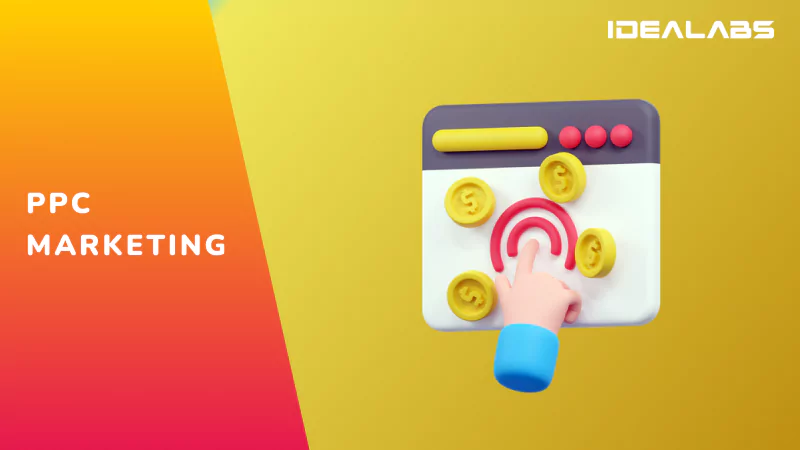In the world of digital marketing, Pay-Per-Click (PPC) advertising has become a popular method for businesses to drive traffic to their websites and increase sales. PPC is a model of internet marketing where advertisers pay a fee each time one of their ads is clicked. It’s a way of buying visits to your site rather than attempting to “earn” those visits organically through search engine optimization (SEO).
Understanding PPC Marketing
PPC marketing is a form of online advertising where advertisers bid on specific keywords that they believe their target audience might search for on the internet. These keywords trigger the appearance of their ads on search engines like Google, Bing, and even on social media platforms like Facebook and Instagram. The ad appears as a sponsored link above or alongside organic search results.
For example, if you search for "best running shoes," you'll likely see ads from companies like Nike or Adidas at the top of the search results page. These companies are using PPC marketing to get their products in front of people who are looking to buy running shoes.
How Does PPC Work?
The PPC process can be broken down into several key steps:
1. Keyword Research
- The first step in creating a PPC campaign is identifying the right keywords. These are the words and phrases that potential customers are likely to use when searching for products or services that your business offers.
- Tools like Google Keyword Planner or SEMrush can help you discover keywords that are relevant to your business. It’s crucial to choose keywords that have a good balance of high search volume and low competition.
2. Creating Ads
- Once you have your keywords, the next step is to create compelling ads. These ads should be relevant to the keywords you’re targeting and provide a clear call to action (CTA), such as "Buy Now" or "Learn More."
- The ads consist of a headline, a description, and a display URL. The headline should grab attention, while the description should explain what the product or service is and why it’s valuable.
3. Bidding
- PPC operates on a bidding system. You decide how much you’re willing to pay for each click on your ad. This is known as your "maximum bid."
- Google Ads and other platforms use a system called "Ad Rank," which determines the position of your ad based on your bid amount and the quality of your ad. The higher your bid and the better your ad, the higher your ad will appear on the search results page.
4. Landing Page Optimization
- When someone clicks on your ad, they are taken to a landing page on your website. This page should be directly related to the ad and optimized to encourage the visitor to take a specific action, such as making a purchase or signing up for a newsletter.
- A well-optimized landing page will have a clear headline, relevant content, and a strong CTA.
5. Monitoring and Optimization
- After your campaign is live, it’s important to monitor its performance regularly. You can track metrics such as click-through rate (CTR), conversion rate, and return on investment (ROI) to see how well your ads are performing.
- Based on the data, you may need to adjust your keywords, bids, or ad content to improve performance. Continuous optimization is key to a successful PPC campaign.
Benefits of PPC Marketing
PPC marketing offers several advantages:
1. Immediate Results
- Unlike SEO, which can take months to show results, PPC can drive traffic to your site almost instantly. As soon as your ad is approved and your campaign is live, you can start getting clicks and potential customers.
2. Targeted Audience
- PPC allows you to target your ads to a specific audience based on factors like location, language, device, and even the time of day. This ensures that your ads are shown to people who are most likely to be interested in your products or services.
3. Cost Control
- With PPC, you have control over your budget. You can set a daily or monthly limit, and you only pay when someone clicks on your ad. This makes PPC a cost-effective way to drive traffic and generate leads.
4. Measurable Results
- PPC provides detailed analytics that allow you to measure the effectiveness of your campaigns. You can track how many people clicked on your ad, how many of those clicks led to conversions, and how much each conversion cost you. This data helps you refine your campaigns for better results.
Challenges of PPC Marketing
While PPC offers many benefits, it also comes with challenges:
1. Competition
- The more popular a keyword is, the more competition there will be for that keyword. This can drive up the cost per click, making it more expensive to run a campaign.
2. Constant Monitoring
- PPC campaigns require ongoing monitoring and optimization. Without regular attention, you may end up wasting money on ineffective ads.
3. Ad Fatigue
- If the same ad is shown repeatedly, it can lead to ad fatigue, where users start ignoring it. To keep your audience engaged, you may need to regularly update your ads with fresh content and visuals.
Conclusion
PPC marketing is a powerful tool that can drive targeted traffic to your website and generate leads quickly. By understanding how PPC works and implementing best practices, you can create effective campaigns that deliver a strong return on investment. Whether you’re a small business or a large corporation, PPC can help you reach your marketing goals and grow your business in the digital age.

